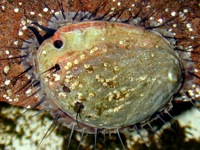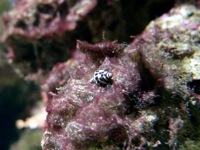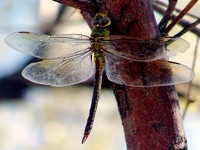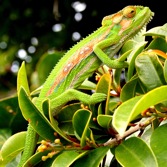
|
|
Mark Your Calendar
Biomimicry in Medicine
Thursday, October 27. 5pm
Dr. Richard Lieber, Department of Orthopedic Surgery, UC San Diego

Experience Nature
at the Zoo!
Innovation often begins by taking a fresh approach, thinking outside the box. What better environment for creativity than up close and personal with our plants and animals? We offer a variety of workshops tailored to academic and corporate audiences. Contact us or visit our website to learn more.

Missed our last newsletter?
View it here.
|
San Diego Zoo Global Biomimicry
October 2011 Newsletter
|
|
  |
|
Biomaterials and Biomimetics
On September 28, the San Diego Zoo together with the City of Murrieta hosted the second of three Fall Biomimicry Receptions. In this reception we learned about bio-inspired materials from Dr. David Kisailus of University of California Riverside, whose research addresses the question, “What can biology teach us
about the synthesis of new materials?” He was accompanied by six undergraduate
and post doctoral students who brought along research posters and a variety of biological artifacts such as abalone shells for guests to explore.
Read a full summary of the reception here.
Be sure to register for the last reception of the series on October 27.
|
|
|
San Diego Zoo Global Biomimicry Outreach
On October 7 Dr. James Danoff-Burg, Director of the Conservation Education Division at the San Diego Zoo Institute for Conservation Research, gave the weekly seminar talk at the Department of Aerospace Engineering and Engineering Mechanics at San Diego State University. In his talk, "Biomimicry: The Future is the Past," he described biomimicry as a review of the rich evolutionary history found in each organism and how that history can inspire new designs in engineering. With compelling examples, he showed how biomimicry is being used to develop products and processes that are impacting conservation, both directly and indirectly.
Upcoming outreach events include:
November 15 - AIGA San Diego "Designing With the Environment in Mind"
November 20 - TEDxYouth@SanDiego Biomimicry Exhibit
|
|
|
TEDxYouthDay
This year San Diego Zoo Global Biomimicry will be exhibiting at TEDxYouthDay. This is a series of TEDx events happening all around the world to celebrate Universal Children's Day on November 20. San Diego's event, TEDxYouth@SanDiego, will be held at Canyon Crest Academy with a theme of "The World in Our Grasp," inspiring youth to take action to solve existing problems. Along with a San Diego Zoo animal ambassador, we will be sharing with participants the exciting ways nature is inspiring new products and processes.
Live streaming will be available at the TEDxYouth@SanDiego website on November 20.
|
|
  |
|
National Science Foundation and Biomimicry
The government has been a strong supporter of biomimicry over the years. Past funding from the Defense Advanced Research Projects Agency (DARPA) has gone towards understanding the underlying mechanism of "flying" snakes and building a hummingbird reconnaissance drone. While DARPA continues to fund projects such as AlphaDog, new government funding for biomimicry is coming out of the National Science Foundation (NSF). From biologically inspired learning models applied to artificial intelligence to studying inter-species signaling to inform new nanotechnologies and small-scale aircraft inspired by dragonfly aerobatics we are eager to hear what comes next out of NSF-funded biomimicry.
|
|
|


|
Inspiring Adaptations
Chameleons have many adaptations with potential to inspire new technologies. Their ability to change color has inventors thinking about housing paints that are a heat-absorbing dark hue during the winter and change to heat-reflecting light hue during the summer months. This could lead to reduced energy bills - a seasonally attuned exterior releaves pressure on heating and air conditioning systems.
Another chameleon adaptation has already inspired a new technology with potential applications in bug catchers or even robotic manipulation in manufacturing plants. An engineer in Japan has created an artificial version of the chameleon tongue: chameleons have a tongue that extends out twice the size of their body length at an acceleration rate of 10 meters per second. While it still has some refining to go, perhaps the artificial chameleon tongue could be used in conservation projects to capture biological samples at a distance.
Read more about chameleons at the San Diego Zoo.
|